
New Photos
November 6, 2005
Fall Colors
|
Some people think Texas has no fall color change, but that's partly because developers bulldoze the native shrubs that develop good color, considering them trashy brush. Here's a case in point: |
||
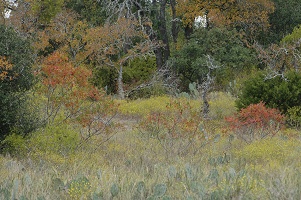 |
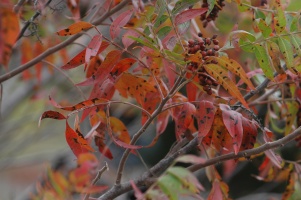 |
|
| The red and orange here are prairie flameleaf sumac; the dull gold trees behind are cedarleaf elm early in the change, and the yellow is broomweed in flower...all glowing on a dull, cloudy day. | Flameleaf sumac can have green, golden yellow, orange, red, and burgundy leaves at the same time. It glows along roadsides, particularly brilliant against the dark green of cedar or live oak but spectacular even alone in a field. | |
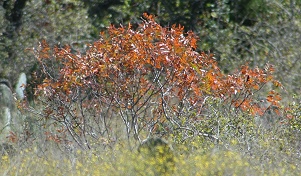
|
||
| Here's a small sumac, a few days later, coming alight in the sun. It's growing out of rock, in a patch of prickly pear cactus. | ||
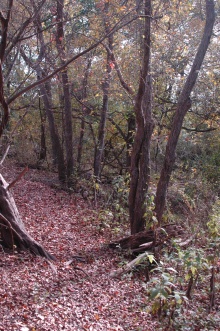 |
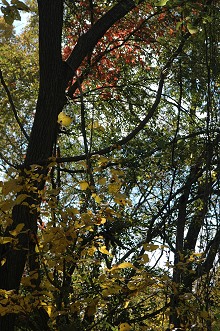 |
|
| Fallen leaves of Virginia creeper, western soapberry, hackberry, persimmon, and others carpet the south woods trail near the south boundary. | The bright yellow leaves lower down are eastern persimmon and osage orange; the red ones higher up are Virginia creeper. Also in the understory, but not in this picture, were the purple and burgundy of roughleaf dogwood. | |
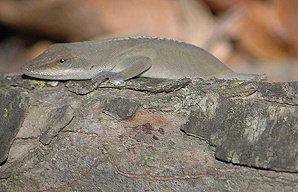 |
||
| This non-native lizard, a green anole trying to match a fallen tree, is backed by salmon and russet fallen leaves. | ||
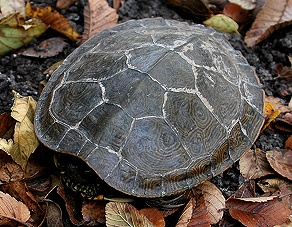 |
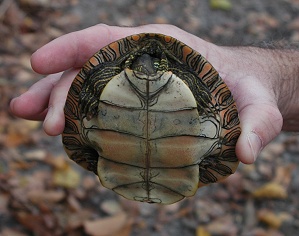 |
|
| A turtle that at first appeared to be a plain shiny brown turned out to have interesting topo map markings in olive and black on its carapace--with bits of orange and salmon around the marginal scutes. | When Dr. Pierce picked it up so I could photograph the ventral surface, the plastron has a soft salmon stain , and the underside of the carapace marginal scutes are salmon with an intricate pattern of lines in black. I never thought of turtles as having fall coloring but here is one. | |
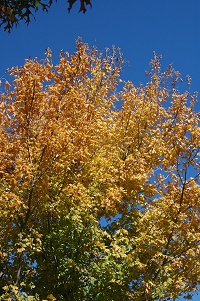 |
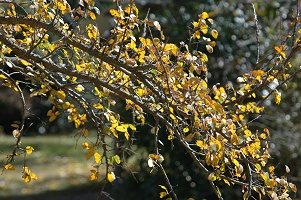
|
|
| One of our more spectacular trees for color, a Caddo maple in the front yard. | And cedar elms can be any color from bronze to clear gold, depending on rainfall, temperature (through the fall) and how far into the change they are. | |
![]()

